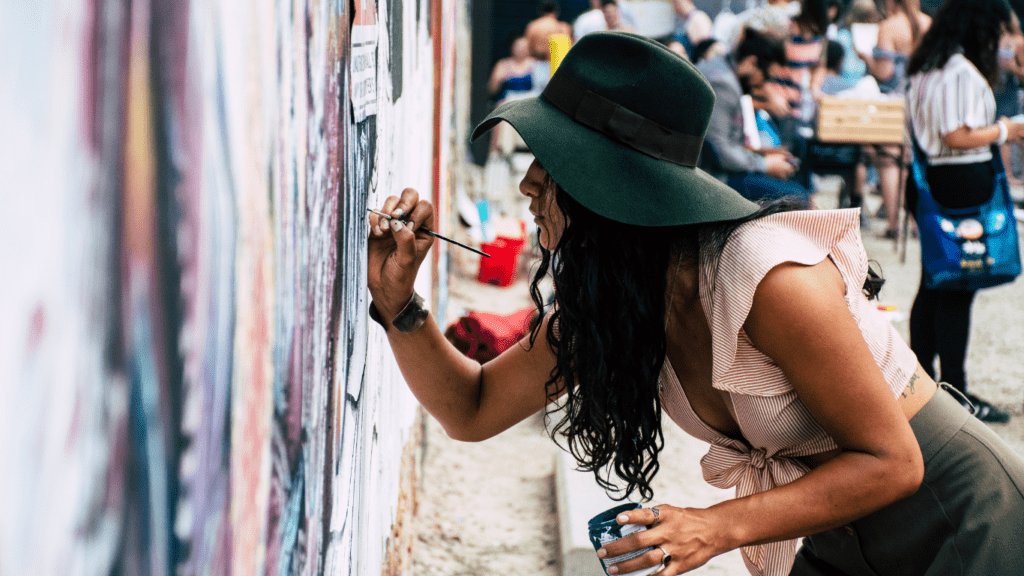Revolution in Sculpture: The Role of 3D Printing
3D printing has dramatically changed the sculpture landscape, integrating technology with art in unprecedented ways. This innovation offers artists new tools to create intricate designs and push artistic boundaries.
History of Sculpture and Traditional Techniques
Sculpture’s history stretches back thousands of years, with traditional techniques involving carving, modeling, casting, and constructing.
Ancient sculptors used tools like chisels and hammers to shape materials such as:
- stone
- wood
- metal
The Renaissance era witnessed masterpieces crafted from marble and bronze, showcasing meticulous craftsmanship and attention to detail.
Introduction to 3D Printing in Art
Artists began leveraging 3D printing to explore novel textures, complex geometries, and precise detailing. Unlike traditional methods, 3D printing builds sculptures layer by layer using materials like plastic, resin, and metal.
This technique allows rapid prototyping, enabling artists to iterate designs quickly and affordably. Leading artists have utilized 3D printing to create works that blend digital and physical mediums, challenging conventional sculptural norms.
Key Advantages of 3D Printing for Sculptors
3D printing offers sculptors innovative advantages that enhance their artistic process.
Speed and Precision
3D printing provides unmatched speed and precision, allowing sculptors to bring complex designs to life quickly. Traditional sculpting methods can take months, but with 3D printing, intricate models can be created in days.
Printers can achieve high levels of detail, with precision down to microns, which ensures accuracy in every piece. This combination of speed and precision enables artists to iterate on designs more efficiently.
Expanded Creative Possibilities
3D printing expands creative possibilities by enabling the exploration of new textures, geometries, and forms. Artists can create intricate patterns and structures that are difficult or impossible to achieve with traditional methods. For example, sculptors can experiment with interlocking parts, dynamic shapes, and organic forms.
This technology also allows for the blending of digital and physical mediums, giving artists the freedom to innovate and push the boundaries of conventional sculpture.
Cost-Effectiveness in Material Use
3D printing maximizes cost-effectiveness by minimizing material waste. Traditional sculpting often results in significant material loss during carving and shaping.
With 3D printing, only the necessary amount of material is used, resulting in efficient use of resources. Various materials, such as plastics, metals, and even biodegradable options, offer flexibility depending on the project’s budget and needs.
This cost-effectiveness makes 3D printing an attractive option for both emerging and established sculptors.
Case Studies: Successful 3D Printed Sculptures
Artists and institutions globally have embraced 3D printing for creating groundbreaking sculptures that captivate audiences.
Notable Artists and Their Works
Numerous artists have leveraged 3D printing to expand their creative boundaries. Joshua Harker, for example, uses intricate and complex designs in his 3D printed sculptures, like the iconic “Crania Anatomica Filigre.” This piece showcases the delicate, lace-like detail 3D printing can achieve.
Another artist, Neri Oxman, combines art and technology in her “Vespers” series, which explores the future of wearables through sculptural 3D prints.
Additionally, Eric van Straaten’s surreal sculptures utilize the precision of 3D printing to create lifelike and otherworldly figures, demonstrating the technology’s ability to blur realism and fantasy.
Impact on Public Art and Installations

3D printing has significantly influenced public art and installations. Artists can now create large-scale sculptures with intricate details that capture public interest. For instance, the “Fragmented Statue of David” displayed in the 2021 Florence art exhibition showcases how 3D printing can reinterpret classic works.
Similarly, Joris Laarman’s “Maker Chair” series, displayed in public spaces, engages audiences with its innovative construction method. The ease of replicating and modifying designs allows public installations to adapt and evolve, offering fresh, dynamic art experiences in urban landscapes.
Challenges and Limitations
Though 3D printing brings innovation to sculpture, some challenges and limitations persist.
Technical Constraints
3D printing in sculpture faces several technical constraints. Material limitations restrict artists as not all materials suit 3D printing, affecting durability and texture authenticity.
Printers vary in precision, with some unable to render the finest details or handle complex structures without errors. Printing time and machine reliability also pose issues, especially for large-scale sculptures, where longer print times increase the risk of failure.
Maintenance and operational costs add to these constraints, often requiring significant investment.
Perceptions and Authenticity
- Perceptions about 3D printed sculptures influence their acceptance in the art community.
- Some traditionalists see 3D printing as lacking the “handmade” quality, questioning the authenticity and artistic value.
- There’s a belief that technology might overshadow the artist’s skill.
- The reproducibility of 3D printed works raises concerns over originality and uniqueness, central aspects of traditional sculpture.
- Buyers and collectors may also hesitate, valuing traditional methods higher than digitally fabricated pieces.
The Future of Sculpture and 3D Printing
As technology advances, the realm of sculpture continues to evolve. 3D printing plays a pivotal role in shaping its future, providing new avenues for creativity and innovation.
Technological Advancements
Technological advancements in 3D printing, including improved printer precision and new materials, are transforming sculpture. Enhanced precision enables artists to create intricate details that traditional methods can’t achieve.
Materials like metal, ceramics, and biodegradable polymers expand the range of possibilities for sculptures, allowing for both durable outdoor pieces and eco-friendly installations. Innovations in large-scale 3D printers enable the creation of monumental sculptures, which were previously limited by the size of printing beds.
Educational and Collaborative Opportunities
3D printing fosters educational and collaborative opportunities, making it accessible for artists and students to experiment with new sculptural techniques.
Educational programs in art schools now include 3D printing as part of their curricula, equipping future artists with technical skills. Online platforms facilitate collaborations between artists globally, allowing shared projects and the fusing of diverse styles. These opportunities encourage innovation and drive the evolution of modern sculpture, making art more inclusive and interconnected.
Continued exploration and integration of 3D printing in sculpture promise to push the boundaries of creativity and redefine artistic practices.

 Anna Freehill, a key contributor to Avant Garde Artistry Hub, plays a vital role in shaping the platform’s vision. As an author and collaborator, she helps bridge the worlds of art and technology, offering insightful articles that guide artists through the rapidly evolving creative landscape. Anna’s dedication to highlighting art's therapeutic value has contributed to the platform’s focus on mental and emotional well-being through creative expression.
Her involvement in building Avant Garde Artistry Hub has been instrumental in providing valuable resources to artists seeking to enhance their careers. Whether through her writing on business strategies or her support in platform development, Anna is committed to fostering a space where artists can thrive and embrace the future of art.
Anna Freehill, a key contributor to Avant Garde Artistry Hub, plays a vital role in shaping the platform’s vision. As an author and collaborator, she helps bridge the worlds of art and technology, offering insightful articles that guide artists through the rapidly evolving creative landscape. Anna’s dedication to highlighting art's therapeutic value has contributed to the platform’s focus on mental and emotional well-being through creative expression.
Her involvement in building Avant Garde Artistry Hub has been instrumental in providing valuable resources to artists seeking to enhance their careers. Whether through her writing on business strategies or her support in platform development, Anna is committed to fostering a space where artists can thrive and embrace the future of art.